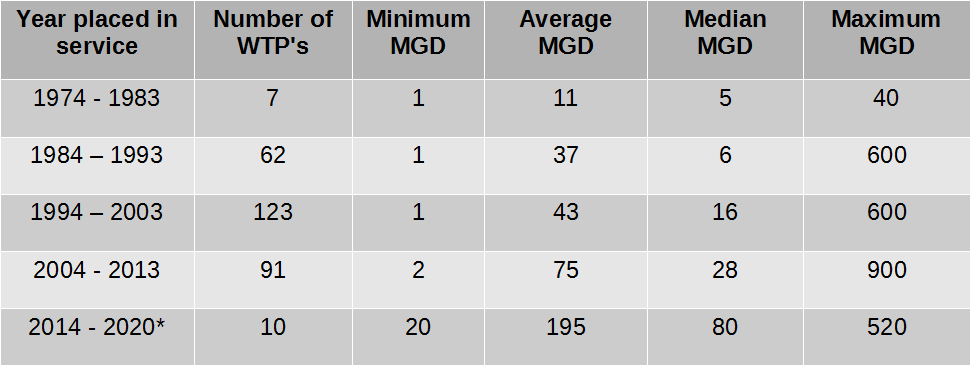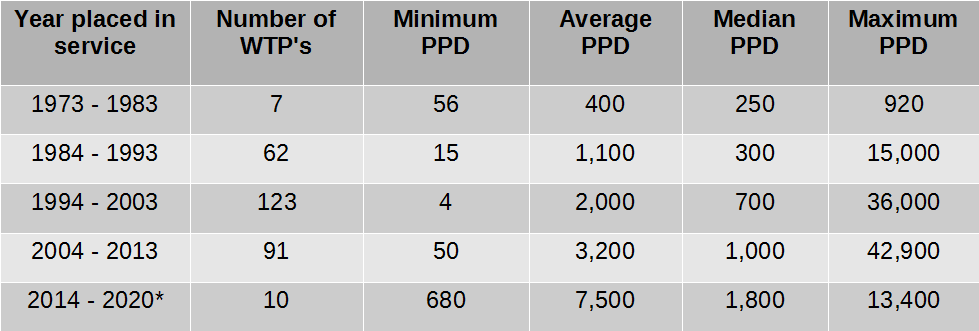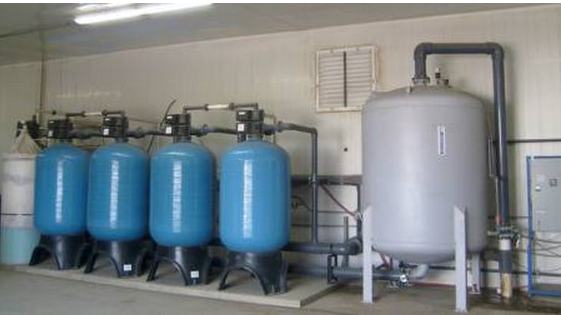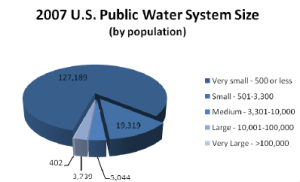Ozone use for drinking water in large municipal water treatment plants has become very popular in recent years. While ozone use may benefit all drinking water plants, most engineering firms and manufacturers have not targeted small to mid-sized WTP’s. This is unfortunate and should be reviewed and considered the next growth potential for ozone implementation in Water Treatment.
Why use ozone for drinking water?
-
Ozone saves money
-
Chemical costs are rising, ozone replaces chemical usage, lowers chemical demand
-
Ozone costs remain fairly constant as technology improves
-
Primary cost of operating ozone system is electrical power and system maintenance
-
-
Better quality water
-
Ozone leaves no residual in water
-
Ozone lowers the use of chlorine, and improves overall water quality
-
Lower, or eliminates DBP’s
-
-
Powerful disinfectant
-
Ozone is a more powerful disinfectant – can provide complete eliminates of Cryptosporidium, Giardia and other chlorine resistant organisms
-
Ozone can oxidize EDC’s and emerging contaminates
-
-
Green! – Ozone is a green technology
Municipal Drinking Water plants using ozone – past and future
-
First ozone use in drinking water in the USA was in 1940
-
Whiting, Indiana drinking water plant used ozone for taste and odor control (Rice, 1999)
-
-
As of 2013, at least 277 WTP’s operating in the USA utilize ozone
-
This data only includes plants larger than 1 MGD capacity, no data is held on smaller plants
-
These plants have a combined capacity of 14.5 billion gallons per day with ozone production greater than 600,000 lb/day
-
-
Since 1983 at least 55 of these plants have been upgraded, using ozone at least once. Indicating ozone use was favored over other technolgoies by all parties.
-
Most ozone use for municipal water is in large water treatment plants.
-
Of the 277 WTP’s of record less than 30 are plants with a capacity less than 2 MGD
-
The median WTP implementing ozone has grown from 5 MGD capacity a the end of 1984 to 80 MGD at the end of 2020 (projected)
-
Growth potential of ozone use in the USA
-
The future of ozone for WTP’s in the USA is great
-
The EPA estimates there are over 150,000 municipal WTP’s in the USA
-
Only about ~300 WTP’s are using, or are planning on using ozone
-
Opportunity for Ozone use in WTP’s in the USA is untapped
-
-
Small to Medium sized WTP’s growth potential is greatest
-
Most of the WTP’s using ozone are large, or very large
-
The Largest WTP’s are targeted most for ozone implementation, and the majority of ozone implementation is in large WTP’s
-
There are many small to medium WTP’s that could use ozone but are not targeted by the traditional ozone industry
-
Drinking water plants the USA by population served
97% of the water treatment systems in the U.S. can be considered small to mid-size (less than 10,000 customers served). The growth potential for ozone use in small and medium sized WTP’s is tremendous.

WTP’s started in 10 year spans shown by capacity
-
Average size of WTP has grown
-
Over time, emphasis on small and medium WTP’s has diminished

WTP’s started in 10 year spans shown by ozone production
-
Average size of WTP and ozone systems has grown
-
Over time, emphasis on small and medium WTP’s has diminished
Where and why is ozone implemented?
-
Ozone is used in 42 of the 50 states in the USA
-
Ozone is used all over the USA, for a variety of applications
-
Ozone use follows population trends, CA, and TX are the two largest users of ozone
-
-
Ozone is used to replace traditional oxidants
-
Disinfection (Giardia & viruses)
-
Taste and odor control
-
Reduction of chlorinated DBP’s
-
Removal of color
-
Sulfide oxidation, TOC reduction, Iron and Manganese oxidation
-
Enhance coagulation processes
-

Other = Hydrogen sulfide oxidation, Oxidation of unnamed materials, enhancing coagulation, iron and/or manganese oxidation, TOC, and “other”
-
Ozone use for municipal WTP’s is diverse, and continues to be diverse in the future
-
Only ozone use for disinfection has grown consistently in each decade
- Ozone use for “other” has also grown over time, however this is a large group of uses for ozone in one category
Implementing ozone in small and mid-sized water treatment plants can be cost effective and simple. See image below for an example of ozone contact tank and filtration system.

Case Study – Lewisville, Indiana
-
400 GPM WTP – Groundwater from 2 wells
-
High Levels of Iron and Manganese in water
-
Ozone implemeted for primary disinfection and iron & manganese oxidation
-
Plant before ozone
-
Chlorine used for disinfection, and iron & manganese oxidation
-
Chlorine use was excessive causing other issues
-
Plant exceeded TTHM limit due to excessive chlorine usage
-
Customer complaints about taste and odor were received weekly
-
-
Plant after ozone
-
Customer complaints decreased 95%
-
TTHM and HAA5 levels fell to zero
-
Chlorine dose reduced from 5 lbs per 35,000 gallons to less than 0.5 lbs per 35,000 gallons
-
Filter back-washes reduced, decreasing sewage costs by almost 90%
-
-
Case Study – Tate Monroe Water Association
-
4 MPD WTP – Groundwater from 11 wells
-
High Levels of Manganese in water
-
Ozone implemeted for primary disinfection and manganese oxidation
-
Plant before ozone
-
Permanganate feed was used for manganese removal
-
TTHM levels were high
-
Plant operation was inconsistent
-
-
Plant after ozone
-
Total project cost was less than $1 million
-
Iron and Manganese levels dropped to near zero
-
Chlorine is more stable and free chlorine lasts longer in distribution system
-
TTHM levels have been cut in half and continue to drop
-
Chlorine use dropped dramatically
-
-
Conclusion
-
Ozone can be a great addition to many WTP’s in the USA
-
Growth potential of the ozone market is great
-
Ozone can save costs, while improving water quality
-
In the future, ozone may be the only option for reducing EDC’s



Pingback: Ozone used for city water plant upgrade | Oxidation Technologies News